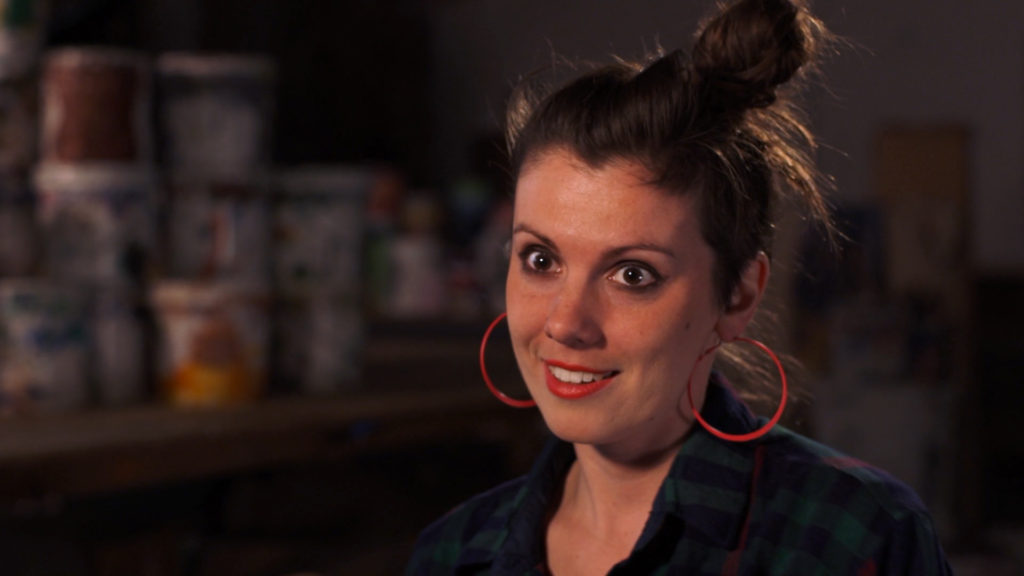
Muralist Greta McLain has a love of life that is infectious. We couldn’t fit all of her positivity into her 9-minute segment, so we’ve pulled these excerpts from her interview.
I’m a south Minneapolis girl, born and raised. I came up in an amazing kind of a golden era in the public school system. I went to Ramsey International Fine Arts School, where we were speaking Spanish in the classroom and taking violin lessons and painting on the walls and doing all these paper mache projects–my education always had a component of art. And from the time I was really young, I saw art as something that offered a career for adults.
I went to school at UC Davis in California and right away I knew I wanted to do murals. Working with people in the Chicano studies department, I was able to tap into that community practice of how do you use art as a vehicle for creating social justice and social change around an issue?
When I was about to graduate, people asked me if I was going to stay in California. They said, “You should stay in California. It’s warm here, it’s nice here.” And I was like, “Yeah, people are doing murals. This is a place I could live.” But then I had some people who were really close and important to me say, “Aren’t you interested in doing community art? Well this isn’t actually yo ur community. You’re not from here. You should go back to Minnesota.”
I didn’t really know about a community mural practice and movement happening in Minnesota, but there’s so much new art activity in Minneapolis and this is totally a community that supports this work happening.
Most of my projects start with 3 main questions; a question that is a definition, a question that is pointing at a problem and a question that is leading to a solution. For example, with a mural that’s about bringing together a community, you might ask “What IS community?” “Where do you find community?” “What is it that makes you part of something together?” “What is it that makes this neighborhood this neighborhood?”
These all start with conversations with the participating groups of people, and you’re going to see that even within such a simple question, everybody gets to voice their perspective and within that conversation, people are hearing the differences. The mural is making the connections and the relationships and standing as a suggestion of where this neighborhood or where this community is going. It starts from a conversation. That dialogue then moves into images.
I was excited about public art and murals rather than doing smaller kind of works because I’m not a detail person; I’m a big picture person. I’m really excited about bringing people to the wall that don’t traditionally get to have their work out in the world and celebrated. And then not only putting them up in a little way, but putting them up really big.
All I want to say is just how honored I am to be a part of the Minneapolis mural scene and part of the work that’s going on here in the public art and community art world. I can’t wait to collaborate with all of the different and innovative kind of art making that is happening here in Minnesota.
Read Next





